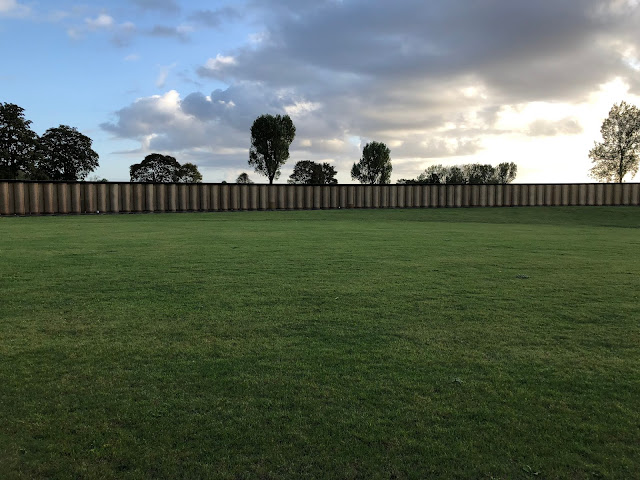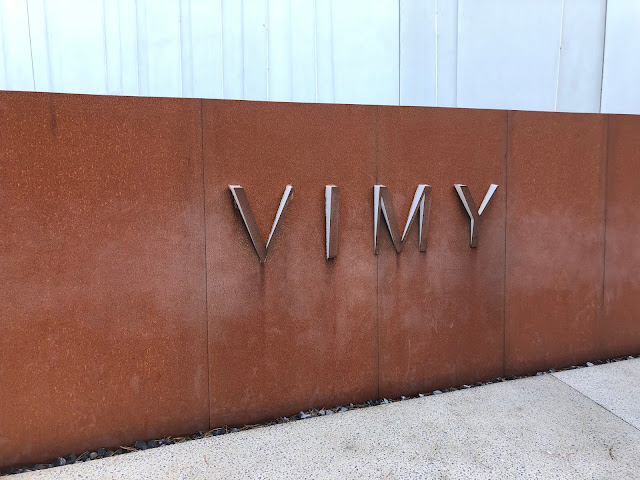Breakfast at the hotel in Arras and then off to the Notre Dame de Lorette. There are over a lot of Frenchies buried here. There is a nice cathedral where I lit a taper for Terri. The adjoining memorial has inscribed 580,00 names of those who perished in the fighting during the Arras battles.
The high ground has a commanding view of the surrounding area.
Then we went to Vimy Ridge. This is where the Canadians earned their spurs.
The battlefield has been maintained as it was during the war. This area, in the April 1915 campaign, had three times the number of guns aimed at an area one quarter the size. The terrain is was literally plowed and replowed with shell fire.
There were several subterranean mines exploded, leaving huge craters.
Of course, during the war, there were no trees left standing and there was no grass, only mud.
After the museum, we went to the memorial itself. It was surreal.
They inscribed the names of over 11,000 Canadians who went missing in action.
This was an industrial and mining part of France. In the distance, the "peaks" are slag piles form mining operations.
Sheep are still used to maintain grass in areas not conducive to mowers and in areas where the danger of unexploded ordinance remains.
A memorial to a Moroccan division who tried to take Vimy in 1915...and were slaughtered.
On to Monchy le Preux
The Newfoundlander's were massacred here. The last ten survivors held off two German divisions until reinforcements arrived.
The battle of Cambrai was the first use of massed tanks. Over 400 Mark IV British tanks took part in the battle.
 |
| Piles of potatoes int the fields |
All British cemeteries have the cross adorned with a crusaders sword.
That was it for the day. Tomorrow we leave Arras.





















































































No comments:
Post a Comment